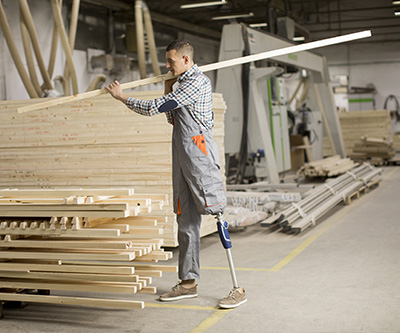Modified Work Programs
Posted: Jan. 14, 2020 • By Kevin Kohler

Should you stay home until you can perform your job after a work injury?
No, it’s quite the opposite, as we’ll discuss later. Consider the case of a plumber-gas fitter presented by the Alberta WCB in its “Success Stories” webpage:
Keith was cleaning a drain at work with a 53 meter long industrial snake which broke and he had to reel back in. That night he experienced back pain that soon became so painful that he could not walk. After physiotherapy and other treatments didn’t help, Keith was diagnosed with a herniated disc that required surgery. After surgery Keith wanted to return to work and his employer found meaningful work that he could perform, coordinating contractors and participating in on-line facility training. Eventually Keith recovered and returned to his full duties.
An Alberta WCB analyst said that having modified work available for injured employees is critical, as it allows them to focus away from their injury or disability and towards recovery, which is beneficial mentally and physically.
What is modified work and how does it relate to return to work programs?

Modified work is a temporary work assignment made to a worker who has been cleared by a physician to work with limitations and is recovering from an illness or injury and cannot perform their previous duties.
Return to work (RTW) is a comprehensive employer program, in partnership with a Worker’s Compensation Insurance provider, for successfully returning ill or injured workers to work that includes offers of modified work where appropriate.
Studies have shown that safely returning workers to meaningful work while they are recovering from their mental or physical injuries is an important factor in ensuring their eventual successful return to work. Formal modified work offers provide a basis for the early return of injured workers to their workplace so that they can concentrate on their recovery and re-integration in the workforce.
How can we create a successful return to work program?
In a Sept 8, 2016 article in the Journal, Chiropractic and Manual Therapies “Factors affecting return to work after injury or illness” the authors cited 7 principles for successful RTW programs established by the Institute of Work and Health:

- Having a strong commitment to health and safety at the workplace
- Providing work accommodation (making reasonable allowances for disabilities)
- Providing support for the returning worker without disadvantaging co-workers and supervisors
- Supervisors included in the RTW planning and trained in work disability prevention
- Early and considerate contact with the injured workers
- RTW coordination between all involved parties
- Communication between employers and healthcare providers about workplace demands
Modified work programs work best within established RTW programs that are integrated with workplace activities, and under the umbrella of a strong health and safety system. All parties should receive training on the RTW program and their responsibilities under modified work programs. This will ensure that workers on modified work, co-workers performing their regular duties, and supervisors, do not become frustrated with the modified work program.
What is the value of a RTW program?
Disability costs to insurers and employers are rising steadily, and part of managing these costs means getting injured workers back safely in the workforce. The sooner an ill or injured person returns to work, even in a modified capacity, the more successful the eventual recovery will be. An effective RTW program demonstrates to all employees your strong commitment to the principles of your health and safety system.
Related Articles

Personal Protective Equipment (PPE)
PPE just makes us look professional on the job right? No, PPE serves an important purpose as a last line […]
Read Article
Forklift safety
What are forklifts? We probably all would recognize a forklift when we see one but some other names are commonly […]
Read Article